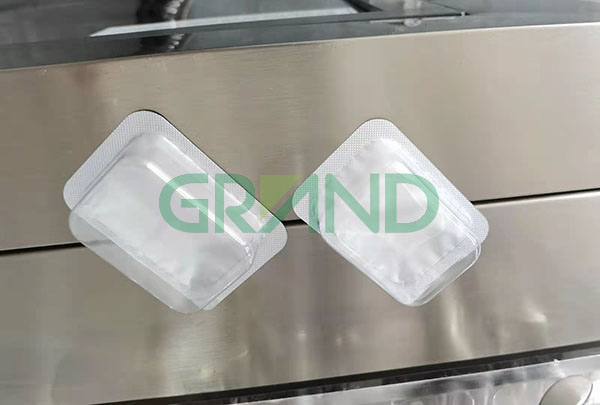Butter went on the dining table of Europeans in the seventh century. Since then it kept sending out magical and attractive charm as a kind of traditional seasoning for daily cooking although the people’s eating habits changes constantly.
After being purified from milk, cream is sterilized, cooled, ripened, stirred, scoured, pressed, salted, formed, weighed and packed to butter, a kind of light yellow solid milk product. Structure of butter is fine and uniform. Being heated and melted, butter gives out special milky fragrance. Its mainly consists of fat and water, as well as protein, cholesterol, riboflavin, calcium, phosphorus, potassium, sodium, magnesium, iron, zinc, selenium, copper, manganese and so on. It can be concluded that butter has high nutritive value.
1. Butter deterioration
Butter is some different from milk in the components although the former is processed from the latter. According to the regulation of GB 19646-2010, butter should contain the min. 80% fat and the max. 16% water. Waterless butter even contains more fat but less water. By comparison, fresh milk contains only 3.5% fat and 87.5% water in average. Their component difference determines their different storing circumstances and also quality change in shelf life.
High proportion of fat of butter means that fat oxidation is the largest threat in storing. Fat is made up of glycerol and all kinds of fatty acid. Furthermore, fatty acid includes saturated fatty acid, monounsaturated fatty acid and polyunsaturated fatty acid. The oxidation of fat begins from the Homo cleavage of unsaturated fatty acid relative to the H atom of double bond α position. The formed carbon atom reacts with oxygen to form peroxides, which enter into chain reaction and form the first-order product organic peroxide. This material is not stable but will generate second-order products after complex division and reaction, including aldehydes, ketones, acids, alcohols and some other pungent small-molecule volatile compounds. This process is called automatic oxidation.
Besides, fat will also has photooxidation reaction. Its speed is even 1000 times of automatic oxidation. Photooxidation mainly needs three factors: 1O2, photosensitizer and light. Oxygen in gas is normally 3O. But photosensitizer such as chlorophyll and riboflavin can absorb energy of ultraviolet rays to transmute 3O2 to 1O2, which can directly react with the double bond of ground-state alkenes to generate hydroperoxide.
2. Key points of butter package
The above fat oxidation mechanism indicates that double-bond unsaturated fatty acid, oxygen and light are the first three factors for butter oxidation. The more highly the fatty acid is unsaturated, the more obvious the oxidation reaction is; the more oxygen and light the butter is exposed to, the faster the oxidation speed will be. However, some other factors, such as metal, water and temperature, can facilitate fat oxidation in certain conditions, too. Chromium, copper, cobalt and iron, these metal ions have quite strong catalytic activity in oxidation. Excessively high water activity will increase dissolution of oxygen in the butter and higher temperature will speed up fat oxidation.
Therefore, resistance to oxygen and light is held essential with resistance to moisture and heat as a supplement for butter package design. Besides, the packages should be oil-proof and well sealed. Oxygen is a necessary condition for both automatic oxidation and photooxidation. And a study on gas permeation mechanism of package finds out that if there is oxygen difference in and out the package, oxygen will permeate through the package from the high-pressure side to the other side until the oxygen concentration reaches a balance at two sides. This means that oxygen permeation occurs all the time in changing environment. Now that oxygen permeation is unavoidable, reducing its rate can be of paramount importance. In this case, some packing material with high resistance to oxygen can provide a good solution. Likewise, sunlight and incandescent lights can also result in photooxidation of butter fat. Therefore, the packing material with good barrier to light can slow this process. What’s more, packing material should be certainly resistant to moisture and heat to weaken butter fat oxidation catalyzed by high temperature.
3. Traditional butter packing material
1) Oil-proof paper
As the name shows, oil-proof paper is made from bleached Kraft wood pulp or natural sulfite wood pulp and has strong oil-proof performance. It is required to be stable physically, non-toxic and odorless to reduce oil permeation and not influence food taste and safety. It is commonly used to pack foods being high in oil, such as butter and pastry. Paper itself has loose fiber structure and is porous so that oil will permeate through it easily. Besides, a large number of polar hydroxyl on fiber surface will generate high surface energy and strong lipophilicity of the paper. Therefore, some measures should be taken to improve paper’s oil-proof performance. Previous oil-proof paper adopted coated paper or lamination paper which are compounded of paper and dense polymer film such as PE. Such oil-proof paper stops oil permeation with the film’s oil-proof function. Considering toxicity and hard degradation of free monomer of polymers, however, their use is now reduced gradually. Nowadays, the new-type oil-proof paper is made from paper with optimized structure and coated with oil-proof additives. It can not only prevent oil from wetting the paper but also benefit degradation and reuse.
2) Alu foil paper and alu-plated paper
As technologies develop, metal gradually shows up in packing material development, especially aluminium. Alu has soft texture and good ductility. By calendering, it can be processed to alu foil with outstanding performance of moisture preventing, air seal, oil resistance, flavoring preserving, light stopping and no toxicity. The composite material of alu foil and traditional packing film can have improved comprehensive performance. Traditional block butter package adopts composite material of alu foil paper or alu-plated paper. They are different in performance and cost due to different composition techniques.
Alu foil paper, or interleaving alu paper, refers to the high-grade package paper compounded of alu foil and paper by glue or paraffin wax. Its composite effect and barrier performance is excellent but also influenced by alu foil purity, pinhole, moisture content of interleaving paper, smoothness, uniformity and gas transmission rate. Output of alu foil paper has reduced since it consumes tremendous amount of alu foil. In contrast, alu-plated paper has wider application in butter packaging industry. Alu is heated in vacuum to evaporate, expand and deposit on the base paper so that a thin alu-film composite material is formed, i.e., alu-plated paper. It can rank with alu-foil paper and has better printing performance than the latter. But its alu consumption is only 1/200 of alu-foil paper. By using alu-plated foil, resources can be saved, cost reduced and efficiency improved. Some factories even compound alu foil with oil-proof paper instead of ordinary base paper for higher oil-proof performance.
On our blister packing machine, butter is widely applied, the packing material is for butter is normally PET and alu foil. The filling volume is mostly 20gram or 30 gram around this. This package is very common for hotel, restaurant, airlines etc.


(Blister package for butter to Morocco customer)
3) Plastic blister package
In China butter is mainly cooked or baked. But it was first eaten directly as food and this habit is now still alive in European and American countries, such as being eaten together with breads. Recently, directly eating butter has become popular. For the sake of convenience, butter is packed in small and independent package. The package looks like yogurt cup with PP as cup wall and alu-PVC film as lidding. It is always called blister and can make transport and eating of butter more convenient.
4. Comparison of packing materials
As it is analyzed, butter should be packed by different material in terms of its eating method and form. We can rely on professional instruments to test them and compare them from four aspects, namely oxygen permeability, moisture transmission, luminous transmittance and heat barrier.
1) Test method
A. Oxygen permeability: adopting OX2/230 oxygen transmission rate test system and referring to GB/T 19789-2005 Packaging material - Test method for oxygen gas permeability characteristics of plastic film and sheeting - Coulometric sensor
B. Moisture transmission: adopting W3/330 water vapor transmission rate test system and referring to GB-T 21529-2008 Determination of water vapour transmission rate for plastic film and sheeting - Electrolytic detection sensor method
C. Luminous transmittance: adopting WGT-S transparency rate/haze determinator and referring to GB/T 2410-2008 Determination of luminous transmittance and haze of transparent plastics
D. Heat barrier: use four alcohol thermometer (0-50°C), cool them to 5°C with water and seal them with ordinary paper, oil-proof paper, alu-plated paper and plastic blisters respectively. Next, adjust the temperature of electric-heating temperature-constant air-blowing drying box at 50 °C and then put the four thermometers into the box. At last, take them out after 15 seconds and determine the heat barrier effect depending on the readings.
2) Test result and analysis
Items | Oxygen permeability cm3/(m2·d) | Water vapor transmission rate g/(m2·24h) | Luminous transmittance % | Heat barrier °C |
Ordinary paper | 8697.421 | 499.163 | 69.7 | 35.4 |
Oil-proof paper | 1408.276 | 135.724 | 58.6 | 29.8 |
Alu-plated paper | 5.624 | 2.871 | 2.8 | 19.5 |
Plastic blister | 103.581 | 8.968 | 10.2 | 22.1 |
Note: for plastic blister, the former three tests measure only its blister wall material while the last one measures it as a whole.
As the test result of oxygen permeability and water vapor transmission rate shows, the barrier performance of ordinary paper is the worst while that of oil-proof treated paper is obviously improved. The reason is that the high beating degree can reduce pore radius between paper fibers and oil-proof additives are coated to fill into the fiber space. Alu-plated paper has the best performance in that its dense structure makes oxygen permeation and water vapor transmission rate be 0.399% and 2.115% of the oil-proof paper respectively. Blister has good moisture preventing performance but indifferent oxygen preventing performance. In terms of luminous transmittance and heat barrier, alu-plated paper has exclusive advantages because of its metal excellent performance of preventing light and heat. By comprehensive comparison, alu-plated paper and plastic blister can be more proper for butter packing considering quality preserving.
However, the above data can only be used as reference since they only show the performance of the four material in this test and might be somewhat different from the actual effect. The samples for test are trimmed from packing material, but butter is packed by folded and sealed material in fact. Barrier performance of package is influenced by different sealing methods and thus different sealing effect. Although alu-plated paper already has excellent barrier, its overall barrier might be worse than that of blisters because it is folded to pack butter.
5. Conclusion
Butter becomes more and more popular with globalization of eating habits. As a result, people have stricter requirements on convenience and quality of package. Butter package changed over time, from oil-proof paper, to alu-plated paper, to plastic blisters, but its core still surrounds around the resistance to oil, light and heat. In the future, relevant companies can pay more attention to performance comparison and analysis of packing materials which is also an important promise of innovating and updating packing materials.

 English
English



